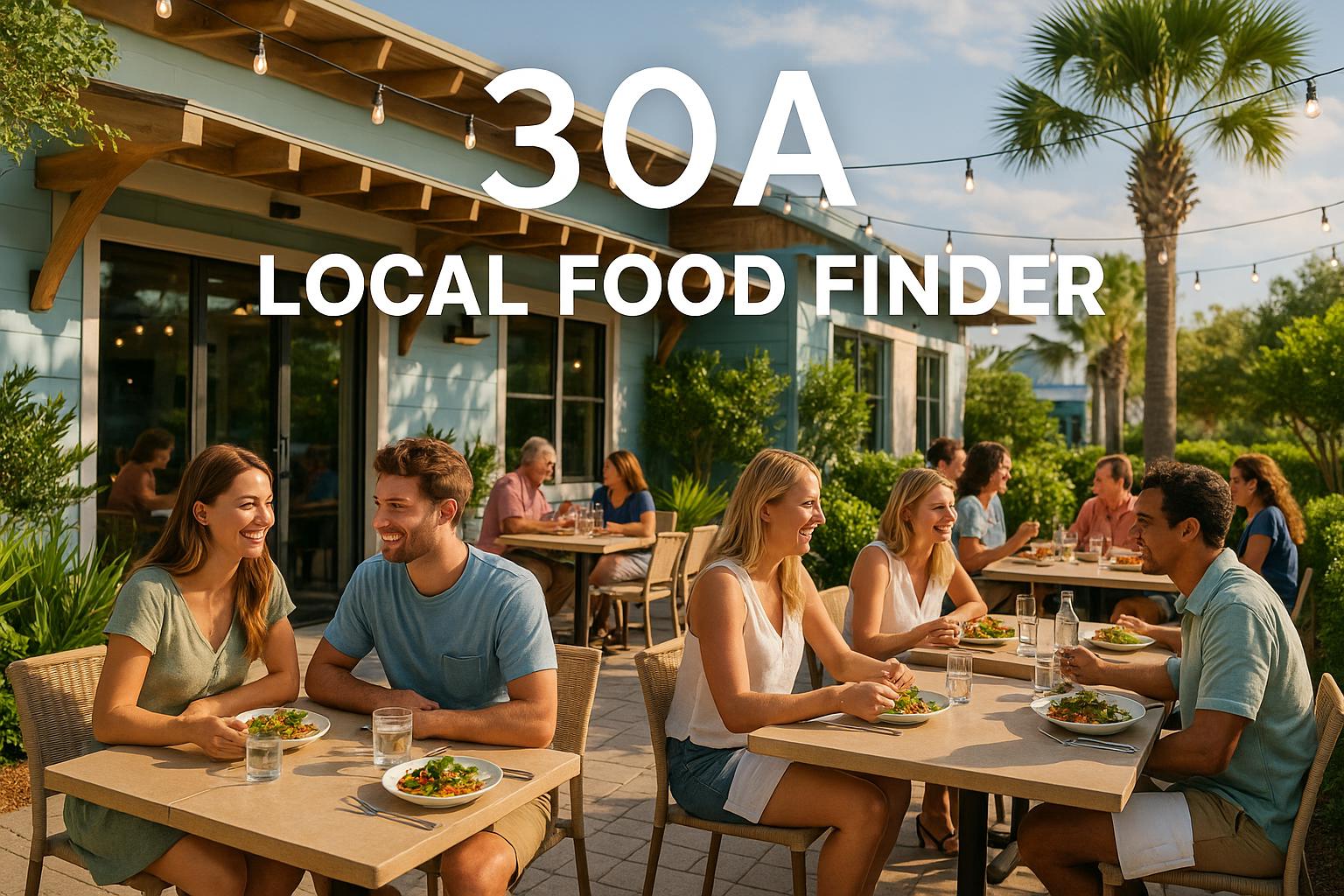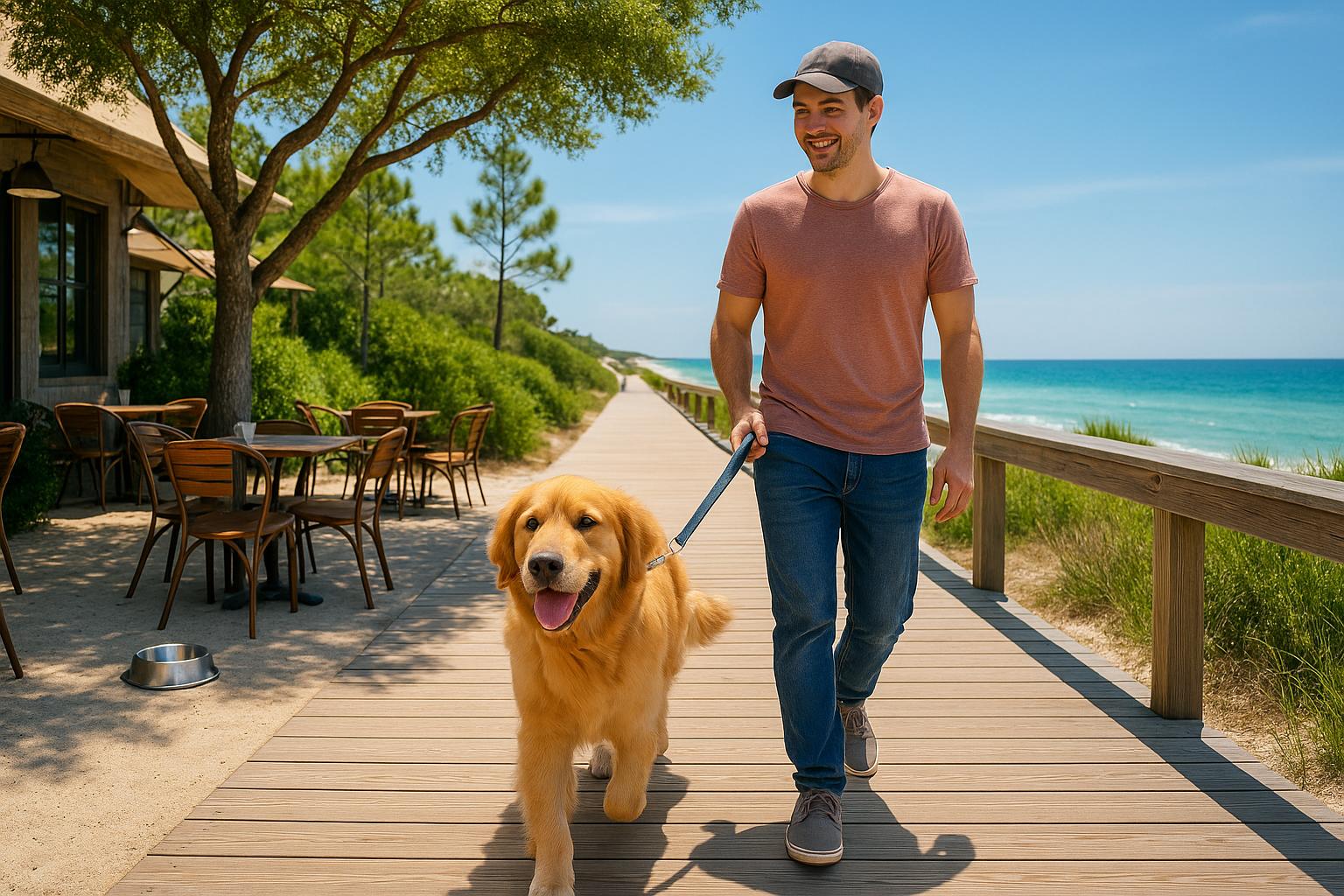Topsail Hill Preserve State Park, located along South Walton's coastline, is a vital refuge for rare ecosystems and species. Over the past 20 years, efforts to protect this 1,640-acre park have addressed challenges like rising sea levels, development, and tourism. Key takeaways include:
- Rare Ecosystems: Home to coastal dune lakes (less than 1% of global lakes) and endangered species like the Choctawhatchee beach mouse.
- Community Efforts: Local groups, like Friends of Topsail Hill, have played a central role in conservation through advocacy, funding, and education programs.
- Conservation Practices: Strategies include controlled burns, removing non-native plants, and restoring natural water systems.
- Balancing Access and Preservation: Visitor guidelines, boardwalks, and seasonal restrictions protect sensitive habitats while maintaining public access.
- Legislative Protections: The 2025 State Park Preservation Act bans harmful developments and increases community input in park management.
Topsail Hill serves as a model for protecting natural areas, combining community action, scientific management, and responsible tourism to preserve its unique ecosystems for future generations.
Outrage caused by proposals to bring hotels and pickleball courts to FL state parks | Quickcast
Conservation Methods and Approaches
Preserving the natural beauty of Topsail Hill relies heavily on teamwork - bringing together community members, local organizations, and research institutions. Volunteer efforts and partnerships play a key role in protecting its delicate ecosystems, creating a foundation for effective conservation.
Community and Stakeholder Involvement
The Friends of Topsail Hill Preserve State Park, a Citizens Support Organization, is at the heart of these efforts. This dedicated volunteer group supports the park by offering recreational rentals, maintaining trails, and organizing activities that highlight the importance of conservation. Events like "Breakfast with a Ranger," Earth Day celebrations, nature walks, and kayak tours help visitors connect with the park's mission and its unique environment.
Beyond hosting events, the Friends group also funds critical projects, such as repairing facilities and purchasing essential equipment. Their work ensures that the park remains accessible while protecting its fragile ecosystems.
Community advocacy has been equally vital in preventing inappropriate development. Public opposition successfully halted proposals for a resort, disc golf course, and pickleball courts, demonstrating the power of collective action in safeguarding Topsail Hill's natural landscape.
Another major milestone is the construction of a state-of-the-art Visitor and Nature Center, which began on December 20, 2024. Backed by $4.2 million in funding from partnerships and individual donors, the center is expected to open in late 2025. It will accommodate up to 100 guests and showcase exhibits on the park's unique features, like its coastal dune lakes and the endangered Choctawhatchee beach mouse. This facility aims to serve as a hub for educational programs and volunteer opportunities, further strengthening the park's conservation mission.
These efforts reflect a long-standing commitment to balancing environmental preservation with community involvement.
In addition to local initiatives, collaborations with universities and environmental organizations provide the scientific foundation needed for effective conservation. These research partnerships generate data that guide decision-making and help track the success of ongoing protection strategies.
What We've Learned from Conservation Work
Conservation efforts at Topsail Hill State Park provide valuable insights that can be applied throughout Florida's 30A region.
Putting Natural Systems First
At Topsail Hill, protecting the environment takes top priority. For example, access to sensitive dunes is restricted during nesting seasons to protect native species. Similarly, efforts to maintain water quality in the area's coastal dune lakes are prioritized over expanding recreational water activities. Even infrastructure development follows this principle, with new facilities carefully placed to avoid disrupting wildlife corridors and critical vegetation zones.
Active Habitat Management Methods
Keeping habitats healthy at Topsail Hill requires hands-on management. Here are three key methods used:
- Prescribed burning: These controlled fires are essential for maintaining ecosystems like longleaf pine forests. They reduce the risk of major wildfires, encourage native plant growth, and preserve the open understory that many species depend on.
- Invasive species control: Non-native plants like Brazilian pepper and cogongrass are regularly monitored and removed to protect the park's native vegetation.
- Water system restoration: Efforts focus on restoring natural water flow in coastal lakes and wetlands. This includes removing artificial barriers, managing erosion, and regulating water levels to support native plants and animals.
Managing Public Access and Conservation
Balancing public access with conservation is a constant challenge. At Topsail Hill, boardwalks and designated trails help guide visitors away from fragile dune systems and nesting areas. Seasonal restrictions during breeding periods also minimize disturbances. To ensure visitors understand the importance of these measures, clear signage and ranger-led educational programs are provided at entry points.
Flexible Management Approaches
Adapting to changing conditions is crucial for effective conservation. At Topsail Hill, regular monitoring of water quality, wildlife, and vegetation allows for quick adjustments to management practices. Partnerships with research institutions keep conservation efforts aligned with the latest scientific findings, while established emergency protocols ensure swift action in response to unexpected challenges. These adaptive strategies also encourage community involvement and education.
Teaching the Community About Conservation
Conservation thrives when the community is engaged. Visitors to Topsail Hill can join guided nature walks and kayak tours to experience the area's unique ecosystems up close, fostering a deeper appreciation for the region's natural heritage. Beyond the park, outreach programs extend these lessons to the broader community, building stronger support for conservation initiatives throughout South Walton and the 30A region. For more information about local efforts, visit sowal.co.
sbb-itb-d06eda6
Results Analysis: What Works and What Doesn't
Recent efforts have focused on striking a balance between protecting natural habitats and ensuring public access. A notable example is the Florida Department of Environmental Protection's Great Outdoors Initiative, which emphasizes expanding public access and enhancing tourism facilities. This builds on earlier practices aimed at managing public access effectively.
The initiative underscores the importance of a flexible approach that uses tourism not only to engage the public but also to support local economies. At the same time, it stresses the need to safeguard fragile ecosystems. Ensuring responsible public access is crucial to preserving the integrity of habitats over the long term.
Conclusion: Keeping Topsail Hill Safe for the Future
Preserving delicate coastal ecosystems takes strong policies and active community involvement. The story of Topsail Hill offers valuable insights for protecting similar natural areas along Florida's coastline and beyond.
Key Takeaways in Conservation
The State Park Preservation Act (HB209), signed into law on May 22, 2025, marked a major milestone in safeguarding Topsail Hill. This legislation prohibits harmful developments like resort lodging, golf courses, and pickleball courts, ensuring the park remains a haven for nature. It also requires greater transparency and public input in managing park lands, giving communities a stronger voice in conservation efforts.
This achievement wasn’t quick or easy - it took years of collaboration among conservationists, local residents, and policymakers. Their shared commitment highlights how collective action can lead to long-lasting environmental protections. Legal measures like HB209 create a foundation for responsible visitor behavior and sustainable park management.
Encouraging Responsible Tourism
Visitors play a vital role in protecting Topsail Hill through mindful choices. The new Visitor and Nature Center, slated to open by late 2025, will be a hub for education and engagement. Featuring exhibits on the park's unique ecosystems, such as coastal dune lakes and the endangered Choctawhatchee beach mouse, the center aims to deepen visitors' understanding of the area's importance.
Simple actions, like staying on marked trails and respecting wildlife guidelines, help preserve fragile habitats. Visitors can also take an active role by joining volunteer programs or attending educational workshops. The new center will host events and activities designed to connect people directly with conservation efforts.
While responsible tourism addresses immediate concerns, the park’s long-term survival depends on staying adaptable.
Preparing for the Future
Topsail Hill’s recent successes provide a strong foundation, but future protection will require flexibility and ongoing commitment. Challenges such as climate change, development pressures, and rising visitor numbers demand innovative solutions and persistent advocacy.
Adaptive management, continuous research, and public participation will be critical moving forward. Investments like the visitor center not only support conservation today but also inspire future generations to carry the torch for environmental stewardship.
The lessons from Topsail Hill go beyond this one park, offering a blueprint for conservation efforts across Florida and the Southeast. By combining legal protections, community activism, scientific management, and education, Topsail Hill serves as a hopeful example of what’s possible when people come together to protect the natural world.
FAQs
How do local communities and partnerships help protect Topsail Hill Preserve State Park?
Local communities and partnerships are at the heart of safeguarding Topsail Hill Preserve State Park. Through volunteer projects, educational programs, and fundraising events, these groups directly contribute to conservation efforts that keep the park thriving. Organizations like the Friends of Topsail Hill Preserve State Park team up with park staff to protect natural habitats, upgrade facilities, and promote environmentally friendly practices.
These partnerships don’t just support the park's ecological well-being - they also inspire ongoing community engagement. By working together, they help ensure that this extraordinary natural area remains a cherished destination for generations to come.
What laws are in place to protect Topsail Hill from harmful development?
In May 2025, Florida introduced the State Park Preservation Act to protect Topsail Hill Preserve and other state parks from harmful development. This legislation bans most construction projects within state parks, including golf courses, resorts, and sports facilities, ensuring these areas remain untouched for future generations to enjoy.
The act also emphasizes transparency and public participation in decisions about land management. By prioritizing ecological balance and involving the community, Florida is taking a strong stand to safeguard its natural resources and prevent overdevelopment in beloved state parks like Topsail Hill.
What role does the new Visitor and Nature Center play in supporting conservation and education at Topsail Hill Preserve State Park?
The Visitor and Nature Center at Topsail Hill Preserve State Park serves as a hub for conservation and education. It features interactive exhibits that highlight the park’s distinctive ecosystems, including its rare coastal dune lakes. The center also organizes programs and events aimed at inspiring environmental awareness and encouraging people to care for the area’s natural resources.
By immersing visitors in the park’s stunning habitats and emphasizing their significance, the center not only deepens appreciation for conservation but also enriches the overall experience for everyone who visits.



